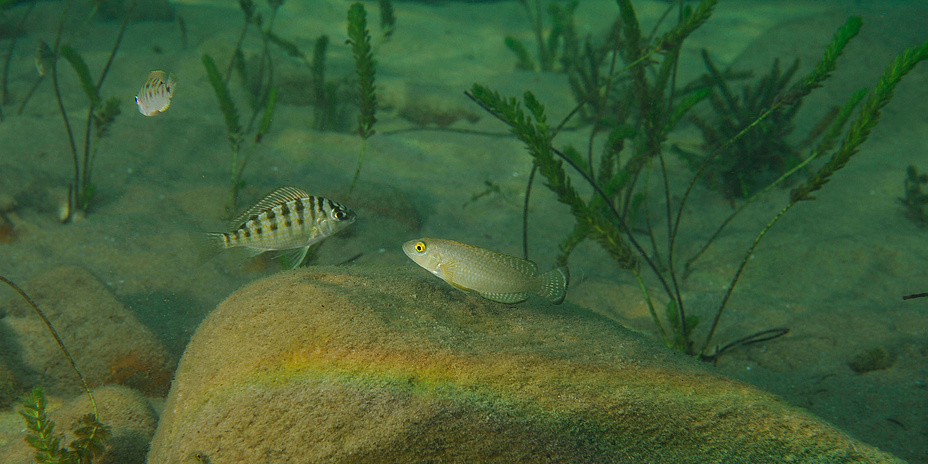Crossbreeding as an evolution booster

Their research results were published in the renowned scientific journal Nature Communications.
"The processes underlying speciation are particularly easy to study when using a system such as cichlids, with several hundred endemic species having evolved within the Lake Tanganyika ecosystem", explains Christian Sturmbauer from the Institute of Biology at the University of Graz. To decipher this rapid and therefore difficult-to-explain species emergence, the collaborating researchers were able to sequence more than 500 selected fish genes via cutting-edge genomic sequencing techniques. "Based on our new evolutionary trees, we can now explain why new species sometimes appear in bursts," summarises the evolutionary biologist. The conclusion: even at the beginning of the oldest cichlid radiation, environment-induced hybridization between the colonizer lineages produced innovative forms, which then expanded rapidly under stable conditions, thus "boosting" the speed of innovation and species development. The researchers established that - for Lake Tanganyika - it was a lineage from the Lower Congo River, which no longer occurs independently in today's lake, but could be detected via genetic information in the other diversifying lineages.It is those characteristics that are exposed to selection that are responsible for the development of new species.
In cichlids, some genes - such as those influencing body colouration and specialisation of the jaw - diversified more rapidly and are associated with the colonisation of new lake environments. "It is those characteristics that are exposed to selection that are responsible for the development of new species," explains Sturmbauer. In the case of cichlids, for example, the jaw innovations are crucial and enable the fish to gain access to previously unexploited food sources. “Using our comprehensive methodology, we were able to substantiate this for the first time," said the researcher.The team was also able to shed light on the much-discussed chronology of events relating to cichlid speciation: up until now, studies that have used molecular clock calibrations resulted in ages that were either too young or too old and were generally problematic to reconcile with the geological history of the region. Research findings resulting from the new molecular clock analysis reconciles the split of the southern Gondwana continent with the chronology of the sinking of the East African Rift valley where Lake Tanganyika cichlids evolved together with the maturing ecosystem. "These findings may help us understand, for example, ongoing changes induced by climate change in the animal kingdom," emphasises Sturmbauer.
This project is anchored in the FoE ‘<link https: www.tugraz.at en research forschungsschwerpunkte-5-fields-of-expertise human-biotechnology overview-human-biotechnology _blank int-link-external external link in new>Human & Biotechnology’, one of five research foci of Graz University of Technology.
You can find more research news from this field in <link https: www.tugraz.at en tu-graz services news-stories planet-research current-articles _blank int-link-external external link in new>Planet research.
Kontakt
Univ.-Prof. Dr.
Institute of Biology | University of Graz
Tel.: +43 (0) 676 325 - 5080
<link int-link-mail window for sending>christian.sturmbauer@uni-graz.at Gerhard THALLINGER
Dipl.-Ing. Dr.techn.
<link https: www.tugraz.at institute icbt home _blank int-link-external external link in new>Institute of Computational Biotechnology
Graz University of Technology
+43 (316) 873 - 5343
<link int-link-mail window for sending>gerhard.thallinger@tugraz.at





